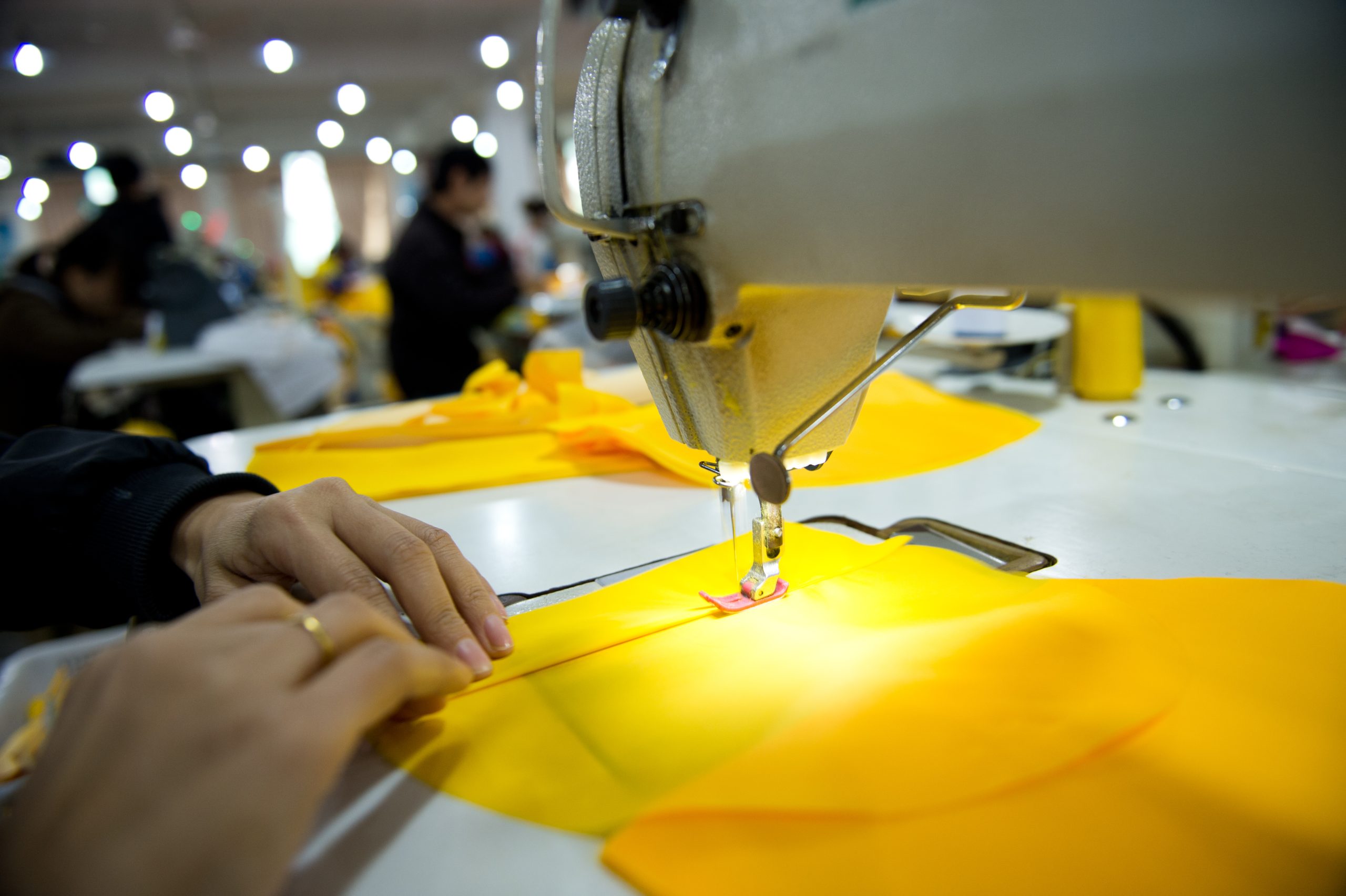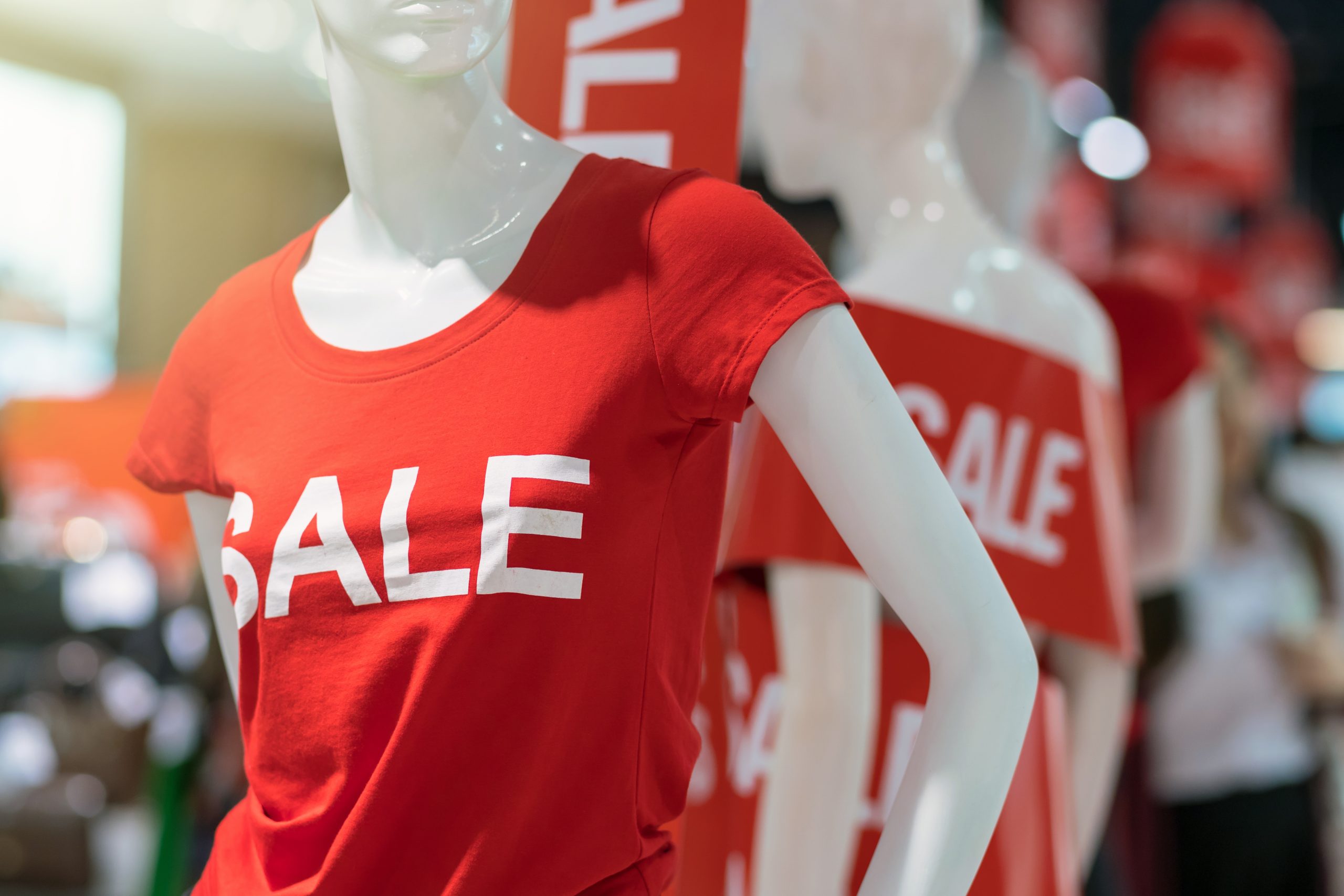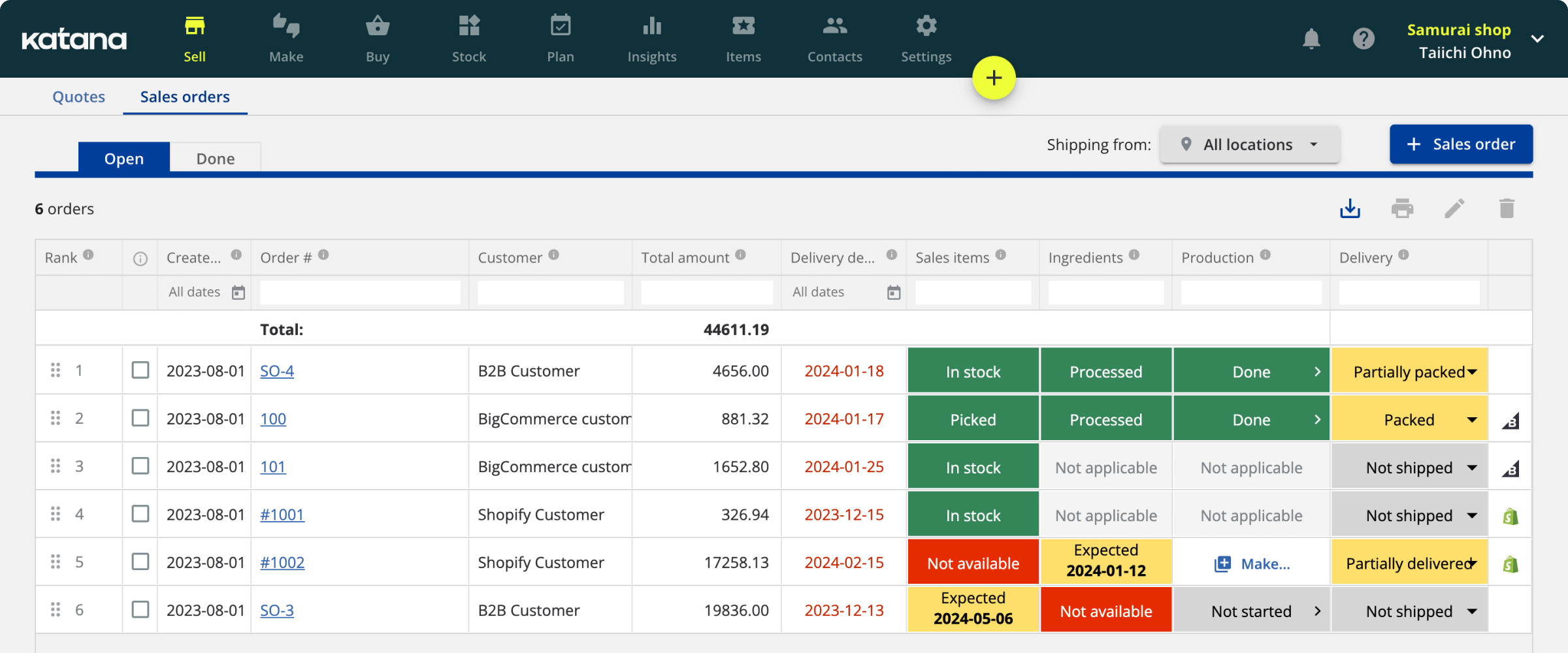The fabric of success: how to start a clothing line
Starting your own clothing line can be full of challenges. This in-depth guide will help you tackle these challenges and make the process as rewarding as possible. Discover the tips and tricks of the trade, from designing your line to managing your production process, and take the first step towards becoming a fashion entrepreneur.

Henry Kivimaa

Have you ever searched for the perfect dress shirt or running shorts but, after a month-long scavenger hunt, had to settle for the not-so-ideal option? Perhaps you found the clothing article you liked, but due to the manufacturer’s business practices, supporting them makes you feel like you’re part of organized crime.
Maybe you’ve encountered similar situations multiple times and dreamt about starting your own clothing brand. We’ve got good news for you! This doesn’t have to be just a dream — creating your clothing brand is entirely doable.
This article will cover all the nitty-gritty of how to start a clothing brand. So, make yourself comfortable, keep reading, and prepare to thread your path in the fashion industry.
The best cloud inventory software for fashion entrepreneurs
Katana equips you with everything necessary to manage your inventory, manufacturing processes, and sales. Take control of your operations, cut back on admin time, and minimize human errors.
How to start a clothing business — the key takeaways
- Identify your niche — Determine the unique angle that sets your brand apart from competitors.
- Develop a business plan — It should include a clear vision for your brand, financial projections, and marketing strategies.
- Create your brand — Choose a name, logo, and brand identity that represents your niche and target audience.
- Design your clothing line — Research and create designs that align with your brand identity and target audience.
- Manufacture — Choose the right manufacturing process for your business, either make-to-order or make-to-stock. Consider outsourcing if it makes sense for your business.
- Manage your production process — Keep a close eye on production timelines, quality control, and inventory management to ensure a smooth process.
- Test your products — Conduct thorough testing to ensure your products meet quality standards and address any issues before going to market.
- Take it to market — Develop a comprehensive marketing strategy and consider using social media and influencer marketing to promote your brand.
- Monitor costs and pricing — Keep track of expenses and pricing strategies to ensure profitability and competitive pricing.
Pick your niche

If the idea to start a clothing line has sprouted from a need, you already have a good niche. However, if you’re just really eager to start a clothing brand, but haven’t quite figured out your exact place in the market, now’s the time.
The importance of choosing a niche cannot be overstated. A niche will help you define your target market, differentiate yourself from competitors, and establish a unique brand identity. It will also guide your decisions regarding design, pricing, and marketing strategies.
When choosing your niche, consider your interests, passions, and your target customer’s needs and preferences. Do you want to create athletic wear for women, sustainable fashion for eco-conscious consumers, or streetwear for urban youth?
Once you have a clear idea of your niche, conduct market research to ensure that there is demand for your product and that your brand will stand out in the marketplace.
Here are some examples of clothing brands that have successfully carved out a niche for themselves:
- Outdoor Voices — Athletic wear for women with an emphasis on inclusivity, sustainability, and a balanced approach to fitness
- Everlane — Transparently sourced, ethically produced clothing with a focus on quality and timeless design
- Supreme — Streetwear brand with a cult-like following among youth culture
- Reformation — Sustainable fashion brand that creates trendy, vintage-inspired clothing using eco-friendly materials and practices
- Allbirds — Sustainable footwear brand with a focus on comfort and simplicity
Choosing a niche doesn’t mean you can’t explore something different later on, but it will provide a strong foundation for branding and marketing efforts. By catering to a specific target market, businesses can better focus their resources and create products or services that meet the needs of that particular customer base.
Additionally, it allows companies to create a loyal customer base and stand out in a crowded market. So take the time to identify your niche and build a brand that truly resonates with your target audience.
Develop a business plan

If you’re like most people, you want to get straight to the drawing board after deciding on your niche. However, to succeed, you will need a solid business plan. So, put down the pen for now, and let’s go through the less exciting part of starting a clothing brand.
You have a clear vision of your brand — the next crucial step is to develop a comprehensive business plan.
A business plan serves as a roadmap for your business, outlining your goals, strategies, financial projections, and contingency plans. It can help you secure funding, attract investors, and make informed decisions as you launch and grow your clothing line.
Here are some key elements to include in your plan:
- Executive summary — This should give a brief overview of your clothing brand, including your mission statement, target market, competitive advantages, and financial projections. It should grab the reader’s attention and provide a clear idea of what your business is all about.
- Market analysis — Conduct a thorough analysis of your target market, including demographics, psychographics, purchasing behaviors, and trends. Identify your target customer’s needs and preferences, and assess the competitive landscape to understand the strengths and weaknesses of your competitors.
- Product Line — Describe your product line in detail, including the types of clothing items you will offer, materials, styles, and pricing. Explain how your products will meet the needs and preferences of your target customer and how you will differentiate yourself from competitors.
- Marketing and sales strategy — Describe how you will promote and sell your clothing line. This could include online marketing, social media, influencer partnerships, pop-up shops, and more. Outline your pricing strategy and any discounts or promotions you plan to offer.
- Financial projections — Estimate your startup costs, operating expenses, and revenue projections for the first 3-5 years of your business. This should include a detailed analysis of your pricing, sales volume, and profit margins. Be realistic and conservative in your projections, and include a contingency plan in case of unexpected challenges or setbacks.
- Operations plan — Describe how you will run your clothing line on a day-to-day basis, including your production process, inventory management, and fulfillment. Explain your staffing needs and any outsourcing you plan to do.
- Legal requirements — Research the legal and regulatory requirements for starting a clothing line in your jurisdiction. This could include registering your business, obtaining licenses and permits, complying with safety regulations, and protecting your intellectual property. Once you have developed a comprehensive business plan, review it carefully and seek feedback from trusted advisors or mentors. Use it as a guide as you launch and grow your clothing line, and be prepared to adapt and pivot as you learn and grow.
In addition to the key elements mentioned above, here are 5 tips to help you when developing your business plan:
- Focus on your unique value proposition — Identify what sets your brand apart from competitors, and make sure this is clear in your business plan.
- Know your numbers — Conduct thorough research and analysis to ensure your financial projections are realistic and based on accurate data.
- Be concise — Keep your business plan concise and to the point, avoiding unnecessary details or jargon.
- Set milestones and benchmarks — Set specific goals and milestones for your clothing line, and establish benchmarks to measure your progress.
- Be prepared for challenges — Anticipate potential challenges and setbacks, and have contingency plans in place to address them.
Developing a business plan for your clothing line may seem daunting, but it is essential in launching a successful business. By taking the time to research and plan your business carefully, you will increase your chances of success and be better equipped to navigate the challenges of entrepreneurship.
Create your brand

Your brand encompasses a lot more than a name and logo. Your brand is the identity that your customers will recognize and associate with your products. It should reflect your values, personality, and unique selling proposition.
Here are 7 steps to help you create a strong brand:
- Define brand identity — Your brand identity will include a mission statement, values, personality, and target audience. Think about what sets your brand apart from competitors and how you want to be perceived by your ideal customer.
- Choose a name — Your brand name should be memorable, easy to pronounce, and reflect your brand’s identity. Consider using a name that is unique and stands out from competitors.
- Create a logo — Your logo is a visual representation of your brand and should be memorable and easily recognizable. Hire a graphic designer to create a professional logo that reflects your brand identity.
- Develop brand voice — This is how you communicate with your customers and should be consistent across all channels. Consider the tone, language, and messaging that best reflects your brand personality and values.
- Create a style guide — A document that outlines the visual and verbal elements of your brand. It should include logo usage, typography, color palette, imagery, and messaging guidelines.
- Establish a presence — You need to have a strong brand presence across all channels, including your website, social media, packaging, and advertising. Use your brand identity consistently to build recognition and establish a connection with your target audience.
- Engage with customers — Answer your customers on social media, respond to their inquiries and feedback, and create a community around your brand. This can help you build loyalty and increase brand awareness.
Creating a strong and memorable brand does not happen overnight — it takes time and effort but pays off. Think about the likes of Nike or Louis Vuitton — these companies have established their brand so well that you can easily recognize them just by seeing their signature font.
Put in the work to make your brand stand out, and you’ll reap the rewards.
Design

Now you’ve reached a point where you can pick up the pen from where you previously dropped it and start designing.
When it comes to design, there are several important factors to consider. Your design should be unique, on-trend, and reflect your brand identity in order to resonate with your target audience.
To achieve this, research is critical. Look at fashion trends, street style, and the designs of other successful clothing lines to gather inspiration and stay up-to-date with the latest trends.
Once you have some rough sketches of your designs, start refining them. Consider the proportions, details, and overall aesthetic, and think about how you can make them more unique and reflective of your brand identity.
Creating tech packs is another crucial step in the design process. A tech pack is a detailed document including all the information necessary to complete your designs, such as measurements, materials, construction details, and other specifications. By creating tech packs, you can ensure that your style is consistent across your products and can be easily reproduced.
Getting feedback from others is also essential. This can include friends, family, or even potential customers. Use their feedback to refine your designs and make them even better.
When you have finalized your designs, it’s time to create prototypes. This allows you to see how your designs look and feel in real life. You may need to make some tweaks based on how they look in the prototype phase.
Once you’re happy with the results, it’s time to start manufacturing.
Software to manage your business and make sure it’s all Gucci
Once you get your business off the ground, Excel spreadsheets won’t suffice. To ensure your manufacturing processes run smoothly and all orders are attended to, you need proper clothing and footwear ERP software. Katana has all the features you need to manage your clothing business and ensure a constant influx of happy customers. Request a demo today.
Manufacture

Manufacturing can be complex, but with the right approach and resources, you can successfully produce high-quality garments that meet your brand’s standards.
Outsourcing vs. in-house manufacturing
One of the first decisions you need to make is whether to outsource your production or keep it in-house. Outsourcing can be a great option if you’re just starting out and don’t have the resources or expertise to manage your own manufacturing processes. It can also be a cost-effective solution if you’re not ready to invest in expensive machinery and equipment.
Outsourcing your production involves finding a third-party manufacturer to produce your designs according to your specifications. Depending on your preferences and budget, this can be done locally or overseas.
When outsourcing production, choosing a manufacturer that is a good fit for your business is essential. Look for a manufacturer with experience in producing clothing lines similar to yours and a good reputation in the industry. You should also consider factors such as their production capacity, manufacturing lead times, and quality control processes.
Working with a manufacturer also requires effective communication and collaboration. You should be clear about your expectations and requirements and work closely with the manufacturer to ensure your designs are produced to your specifications. That’s also where the tech packs really come in handy. You weren’t planning on skipping that, right?
On the other hand, in-house manufacturing involves setting up your production facility in a dedicated location or as part of your existing business premises. This will be more expensive and time-consuming than outsourcing, but it gives you greater control over the production process and allows you to ensure that your designs are produced to your exact specifications.
In addition, in-house manufacturing allows you to take advantage of the latest technologies and develop more efficient production processes. You can also respond quickly to changes in market demand and customer feedback and make adjustments as needed.
Overall, it is important to consider both options carefully when deciding whether to outsource or keep the manufacturing in-house.
What about dropshipping?
Since you’re reading up on how to create your own line of clothing, you’re likely looking to be quite involved in the design process. Dropshipping will not let you CHANEL your inner fashionista, but it’s still worth bringing up.
What is dropshipping? It’s a way of selling products online where you don’t hold any inventory. Instead, you partner with a manufacturer or wholesaler who will ship the product directly to your customer on your behalf. You only need to make the sale, and everything else is handled for you.
The pros of dropshipping are that you don’t have to worry about inventory management or shipping logistics, which can save you a lot of time and money. However, there are some downsides to consider as well.
Firstly, because you don’t hold inventory, you have less control over the quality of the products shipped to your customers. This can lead to unhappy customers and damage to your brand reputation. Additionally, since you are not handling the shipping yourself, you can’t provide the same level of customer service that you would be able to if you were shipping products yourself.
Another issue with dropshipping is that it can be challenging to differentiate yourself from other online retailers who are also dropshipping the same products. This can lead to fierce competition and price wars, eroding your profit margins.
That being said, dropshipping can still be a viable option if you’re just starting out and don’t have the resources to invest in inventory or production. It can also be a good way to test the market and gauge interest in your brand before committing to larger production runs.
If you decide to go the dropshipping route, partner with a reputable manufacturer or wholesaler. Research and read reviews to ensure they have a track record of delivering quality products and excellent customer service.
Make-to-stock vs. make-to-order workflows
Another big decision you need to make is about the workflow you choose. When it comes to manufacturing, there are two main approaches: make-to-stock and make-to-order. Both methods have their pros and cons, and the choice depends on your business needs.
Make-to-stock, also known as push manufacturing, involves producing items in advance based on anticipated demand. The finished goods are then stored in a warehouse until customers order them. This approach is suitable for products with a stable and predictable demand, and it allows for quicker delivery times. However, it also carries the risk of overproduction, which can lead to excess inventory, waste, and storage costs.
On the other hand, make-to-order, also known as pull manufacturing, involves producing items only after receiving an order from a customer. This approach is suitable for products with variable demand or customization options, and it minimizes the risk of overproduction. However, it also requires a longer lead time and a more complex supply chain, as each product is made specifically for a customer’s order.
To decide which approach is right for you, consider your product’s demand and lead time, production capacity, inventory costs, and customer expectations. For example, if you offer a limited edition line that sells out quickly, make-to-order may be the best option to avoid overproduction. However, if you have a classic line of products with stable demand, make-to-stock may be a more efficient option.
Need software to manage your apparel business?
Katana is the perfect fit for apparel manufacturers. Take control of your production lines and inventory with an intuitive cloud platform.
Managing your production process
This part is critical to ensuring a successful outcome, so below, you’ll find some essential tips to help you manage your production process:
- Keep detailed records — It’s crucial to keep a record of every step of the production process, from sourcing materials to delivering finished products. This information will help you identify any issues that arise during the manufacturing process and take corrective measures promptly.
- Use production management software — Production management software can help you streamline the manufacturing process and monitor the production flow. Tools like textile manufacturing software help manage inventory, production scheduling, and material requirements.
- Monitor production quality — To ensure your garments meet your brand’s standards, you need to establish quality control processes. You can do this by creating and following your production quality control checklist throughout the manufacturing process. The checklist should include things like the product’s dimensions, stitching quality, and overall appearance. You also need to have a system in place for handling any issues that arise.
- Develop a contingency plan — Plan for unexpected events that can disrupt the manufacturing process, such as material shortages or unplanned manufacturing downtime. Having a contingency plan can help minimize the impact of these events and keep your production process running smoothly.
Cost management and pricing strategy
Another challenging task that you will face is managing costs while maintaining quality. But developing an effective pricing strategy and keeping costs under control is an integral part of any sustainable business.
So, how can you keep your prices reasonable while not sacrificing quality?
Firstly, it’s important to have a clear understanding of your production costs. This includes the cost of materials, manufacturing, shipping, and other expenses associated with producing your garments. Secondly, research the market to understand the price points of your competitors. This will help you determine a fair price for your garments that’s competitive and profitable.
You should also decide on the profit margin you want to achieve for each garment. This will help you determine the selling price that will allow you to reach your desired profit margin. Negotiate with your suppliers to get the best possible prices for materials and other supplies. You may be able to get discounts for bulk orders or by paying in advance.
Effective inventory management can help you reduce waste and minimize storage costs. Use tools like Katana’s cloud inventory platform to track inventory levels in real time and set reorder points to avoid stockouts. Consider outsourcing production as it can be a cost-effective option for small businesses. Working with a manufacturing partner can help you produce your garments at a lower cost, allowing you to focus on other aspects of your business.
Finally, develop a pricing strategy that takes into account the cost of production, market demand for your products, and your target profit margin. You may consider offering discounts for bulk orders or for customers who purchase multiple items.
By managing costs effectively and developing an appropriate pricing strategy, you can create a sustainable and profitable clothing line. Remember, pricing is a critical aspect of your business, so take the time to research and develop a strategy that works for you.
Don’t forget to test

Once your garments have been manufactured, it’s important to test them before releasing them to the market.
This part is crucial because it helps identify product defects that may impact customer satisfaction. Customers expect items to be of high quality, and if they receive a defective one, they may return it or leave negative reviews. This can damage your reputation and result in lost sales.
Testing also helps you identify any safety issues with your products. For example, if you’re selling garments for children, you need to ensure that they don’t contain any small parts that could be a choking hazard. Testing your products can help you avoid safety issues and meet regulatory standards.
To test your products, you can use various methods, depending on the type of garment and the quality standards you aim to meet. One effective method is conducting a visual inspection, which involves examining the garments for defects, such as loose threads, stains, or holes.
You can also conduct functional tests, which involve testing the clothing to ensure they perform as expected. For example, if you’re selling running shorts, you may want to test them for comfort, breathability, and durability.
Another option is to conduct laboratory tests, which involve sending samples of your garments to a lab for testing. This can include tests for colorfastness, shrinkage, and strength.
If your testing reveals any product issues, addressing them before releasing the garments to the market is important. Depending on the severity of the problem, you may need to consider reworking the garments or scrapping them altogether.
If you’re working with a manufacturing partner, you need to communicate any issues to them and work together to find a solution. In some cases, they may be able to rework the garments at no extra cost.
It’s also important to have a plan in place for handling customer complaints. If a customer receives a defective product, offering a replacement or refund is vital to ensure their satisfaction and maintain a positive reputation.
Remember, quality is key to building a successful clothing line, so don’t overlook the importance of testing.
Go to market

You’ve picked a niche that resonates with you, written a Pulitzer prize-worthy business plan, and your brand identity is clear and recognizable from miles away. You’ve also designed beautiful garments, developed production plans, and tested the quality.
Now, you need to get it in front of potential customers and convince them to buy.
In this section, we’ll cover the steps involved in taking your clothing line to market and what to look out for along the way.
Sales and distribution channels
One of the first things you’ll need to decide when taking your clothing line to market is how you want to sell and distribute your products. There are several options available, each with its own benefits and drawbacks.
For example, selling directly to consumers through an online store can be cost-effective and allow for greater control over the customer experience. However, it can also be challenging to stand out in a crowded online marketplace.
Selling through distributors or wholesalers can help you reach a wider audience, but it means giving up some control over how your products are sold and marketed.
Finally, selling through retailers can be an effective way to reach customers in person, but getting your products into stores and competing with established brands can also be challenging.
When deciding on your sales and distribution channels, it’s important to consider your target market and how they prefer to shop for clothing. For example, if you’re targeting younger consumers more likely to shop online, an e-commerce store might be the best option.
Marketing and promotion

Once you’ve decided on your sales and distribution channels, it’s time to develop a marketing and promotion plan to raise awareness of your brand and products. This could include social media advertising, influencer partnerships, events, and more.
Don’t try to appeal to too broad of an audience. Instead, identify your target market and create a message that resonates with them.
For example, if you’re targeting active women in their 20s and 30s, your marketing message might focus on the versatility and functionality of your clothing.
It’s also critical to track the success of your marketing efforts and adjust your strategy accordingly. If you do not see the results you want from social media advertising, you might need to consider other options like email marketing or influencer partnerships.
Pricing strategy
Setting the right price for your products is essential for balancing profitability and competitiveness. Make sure to consider factors such as production costs, competitor pricing, and target market when setting your prices.
If your prices are too high, you might struggle to attract customers, but if they’re too low, you might not be able to make a profit. It’s important to do your research and set prices that are competitive but also allow you to make a profit.
Inventory management
As you start selling your products, you’ll need to manage your inventory to ensure you have enough stock to meet demand, but not so much that you’re left with excess inventory pumping up your carrying costs. This can involve planning demand, tracking inventory levels, and adjusting production accordingly.
One common mistake among new businesses is overestimating demand and producing too much inventory. This can lead to excess inventory that’s difficult to sell and ties up capital that could be used elsewhere in the business. To avoid it, you need to monitor your inventory levels and adjust production accordingly.
Customer service
Finally, developing a customer service plan to handle inquiries, complaints, and returns is crucial. Excellent customer service can help you build a loyal customer base and increase the likelihood of repeat purchases.
Companies often skimp out on investing in customer service, leading to negative reviews and lost sales.
By now, you have a lot of valuable information on how to start a clothing company, but is all this work even worth it if you’re not just doing it as a hobby? Let’s ask the real question.
Can it pay off?

Absolutely! Clothing lines have the potential to make boatloads of money. Just look at Bernard Arnault, the richest person in the world today and the owner of the luxury conglomerate LVMH which includes several successful clothing lines like Louis Vuitton, Dior, and Givenchy. These high-end brands are known for their quality, craftsmanship, and, of course, prices that make you cry. In fact, the luxury fashion industry is estimated to be worth around $111 billion globally.
But clothing lines aren’t just limited to the high-end luxury brands. There are plenty of successful clothing lines at all price points. From fast fashion giants like H&M and Zara to athletic brands like Nike and Adidas, the clothing industry has something for everyone.
A key to making money in the clothing industry is to create a strong brand identity. Consumers want to feel connected to the brands they wear, whether through shared values, unique designs, or a compelling story. Successful clothing lines also tend to have a strong online presence, leveraging social media and e-commerce platforms to reach a wider audience.
Of course, there are challenges as well. The fashion industry can be notoriously fickle, with trends coming and going faster than you can say “bell-bottoms”. Clothing lines also face competition from all corners of the world, with new brands popping up constantly. But with the right mix of creativity, marketing savvy, and business acumen, a clothing line can be a profitable venture.
So if fashion’s your passion and you have an entrepreneurial spirit, why not just do it?
Cloud inventory software that’s a perfect fit

Since we’re living in the 21st century, you, of course, won’t be able to compete without software that helps you manage it all.
Katana is cloud-based fashion ERP software that helps businesses manage their production processes more efficiently. It provides a range of features and tools that can help streamline operations, reduce waste, and improve overall efficiency.
One of the key benefits of using Katana is its ability to track raw materials and inventory levels in real time. This means you can keep track of your stock levels and reorder materials before you run out, making sure you always have the supplies you need to produce your garments.
Katana also lets you plan and schedule your production, ensuring you have the resources and capacity to meet demand. You can create production orders, assign tasks to team members, and track progress in real time. This allows you to stay on top of your production schedule and make adjustments as needed.
Another exciting aspect of Katana is its ability to generate accurate cost calculations. By inputting your raw material costs, labor costs, and other expenses, you can clearly understand your overall production costs and make informed decisions about pricing and profitability.
Katana integrates with all the best business tools out there, like QuickBooks Online, Shopify, and Xero. Integrating other platforms with Katana lets you keep all your information synchronized, allowing you to manage your entire business from one intuitive application.
With all of its features, Katana can be invaluable for managing your manufacturing process and ensuring that your clothing line is produced efficiently and cost-effectively. Reach out to our sales team to request a demo and see how Katana can guarantee your clothing line will be a socksessful one.

Henry Kivimaa
Table of contents
Get inventory trends, news, and tips every month
Get visibility over your sales and stock
Wave goodbye to uncertainty by using Katana Cloud Inventory for total inventory control
